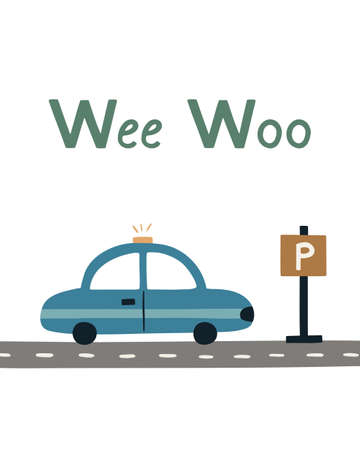Understanding the Pros and Cons of New vs Used Cars
When faced with the decision to purchase a vehicle, weighing the advantages and drawbacks of new versus used cars is essential for making an informed choice. From a rational perspective, several key factors should be considered: reliability, technology features, and initial quality. New cars offer cutting-edge safety and convenience technologies, come with full manufacturer warranties, and provide peace of mind due to zero prior usage. However, they typically experience faster depreciation and have higher upfront costs. Used cars, on the other hand, are generally more budget-friendly and depreciate less rapidly after purchase, but buyers must carefully assess potential wear and tear, limited warranty coverage, and possibly outdated features. By breaking down these pros and cons systematically, you can align your decision with your priorities—whether you value reliability above all or seek maximum value for your investment.
2. Budget and Total Cost of Ownership
When deciding between a new and used car, analyzing the total financial commitment is crucial for making a smart, sustainable choice. While the sticker price grabs your attention first, true affordability comes down to understanding the full cost of ownership over time. This includes not only the purchase price, but also depreciation, insurance, taxes, and maintenance.
Initial Costs: New vs. Used
| Cost Factor | New Car | Used Car |
|---|---|---|
| Purchase Price | Higher (MSRP + dealer fees) | Lower (market dependent) |
| Sales Tax & Fees | Higher due to higher value | Lower; varies by state |
| Insurance Premiums | Tends to be higher | Tends to be lower |
Depreciation Analysis
Depreciation is one of the most significant costs associated with car ownership. New cars typically lose 20-30% of their value in the first year and up to 60% within five years. Used cars have already absorbed this initial drop, meaning their depreciation curve is much flatter.
Example Depreciation Over 5 Years:
| Year | % Value Lost (New Car) | % Value Lost (Used Car – 3 Years Old) |
|---|---|---|
| 1 | 20% | 7% |
| 2 | 33% | 13% |
| 5 | 60% | 35% |
Maintenance and Repair Costs
New cars generally require less maintenance early on and come with warranties that cover many potential repairs. Used cars may have higher upfront maintenance costs or require more frequent repairs, especially if out of warranty. However, choosing a certified pre-owned (CPO) vehicle can mitigate some of these risks.
Total Cost Perspective:
- New Cars: Higher upfront costs, rapid early depreciation, but lower initial repair/maintenance expenses.
- Used Cars: Lower upfront costs, slower depreciation, potentially higher maintenance/repair expenses depending on age and mileage.
The Bottom Line: Calculate Before You Commit
A comprehensive budget analysis—factoring in purchase price, ongoing expenses, and long-term depreciation—provides the clearest picture of what you’ll really spend. Use tools like total cost of ownership calculators and request quotes from insurance providers before you buy. Remember: The best choice aligns not just with your initial budget but also with your financial comfort over the years you own the car.

3. Financing and Incentives
When deciding between a new and used car in the U.S., understanding your financing options is critical. The way you pay for your vehicle can have a significant impact on your total cost of ownership, monthly payments, and even the model you can afford. Here’s how the landscape typically breaks down:
Credit Options and Loan Terms
New cars generally come with more attractive financing options from both banks and automakers. Lenders view new vehicles as less risky collateral, so borrowers often qualify for longer loan terms—sometimes up to 72 or even 84 months—and lower down payments. Used cars, on the other hand, usually have shorter loan terms (often capped at 60 months) and may require higher interest rates due to increased lender risk associated with vehicle depreciation and condition.
Manufacturer Incentives
Automakers regularly offer incentives to boost new car sales, including cash rebates, special low or zero percent APR financing, loyalty bonuses, or lease deals. These incentives can significantly lower the upfront price or the long-term cost of a new car. In contrast, such perks are rarely available for used vehicles; most incentives are reserved strictly for new purchases or certified pre-owned (CPO) programs that still don’t match the breadth of new-car offers.
Interest Rates: New vs. Used
Interest rates are typically lower for new car loans than for used ones. According to recent data from major U.S. lenders, the average rate for a new car loan hovers around 6-7%, while used car loans can be 2-3 percentage points higher depending on creditworthiness and vehicle age. This difference means a used car could end up costing more over time if financed, despite its lower sticker price.
In summary, new cars offer better access to competitive financing and manufacturer incentives, which can make them more affordable for buyers who qualify for these benefits. For those considering a used vehicle, it’s essential to shop around for the best rates and be prepared for stricter loan conditions.
4. Warranty, Reliability, and Maintenance
When deciding between a new or used car, it’s crucial to evaluate warranty coverage, expected reliability, and maintenance requirements. These factors directly influence your long-term satisfaction and total cost of ownership.
Warranty Coverage: New vs. Used Cars
New cars typically come with comprehensive manufacturer warranties—often covering the vehicle for 3 to 5 years or up to 60,000 miles. In contrast, used cars may have limited or expired warranties unless they are certified pre-owned (CPO), which usually includes some form of extended coverage. The table below compares common warranty scenarios:
| New Car | Used Car | Certified Pre-Owned | |
|---|---|---|---|
| Bumper-to-Bumper Warranty | Yes (Full Term) | No (Expired or Limited) | Yes (Shorter Term) |
| Powertrain Warranty | Yes (Typically Longer) | Maybe (Depends on Age/Mileage) | Yes (Extended by Manufacturer) |
| Roadside Assistance | Included | Rarely Included | Often Included |
Reliability Considerations
A new car generally offers the peace of mind that comes with no prior usage and the latest technology. However, some newly released models may have unproven reliability. Used cars often have an established track record; resources like Consumer Reports and J.D. Power can provide data on typical issues for specific makes and models. CPO vehicles undergo inspections to ensure higher reliability standards compared to standard used cars.
Maintenance Expectations
Maintenance costs are generally lower for new cars in the first few years since most major repairs are covered under warranty. Used cars, especially those out of warranty, may require more frequent repairs and replacement parts due to age and mileage. Here’s a comparison of typical maintenance needs:
| New Car (First 3 Years) | Used Car (5+ Years Old) | |
|---|---|---|
| Oil Changes & Fluids | Routine Only | More Frequent; Possible Leaks |
| Tires & Brakes | Seldom Replaced Early On | May Need Replacement Sooner |
| Batteries/Belts/Hoses | Unlikely Issues Early On | Higher Risk of Wear/Failure |
| Major Repairs (Transmission/Engine) | Rare Due to Warranty Coverage | Potentially Needed; Expensive if Out of Warranty |
Total Satisfaction Impact
Your comfort with potential out-of-pocket repair costs and willingness to handle occasional maintenance surprises should weigh heavily in your decision. New cars offer maximum predictability, while used vehicles can deliver value but require careful vetting and budgeting for possible repairs.
5. Access to Modern Tech and Safety Features
When choosing between a new and used car, one of the most significant considerations is the availability of advanced technology and safety features. New cars almost always come equipped with the latest innovations, such as adaptive cruise control, lane-keeping assist, blind-spot monitoring, automatic emergency braking, wireless Apple CarPlay or Android Auto, and high-definition touchscreens. These features not only enhance convenience but also play a crucial role in driver and passenger safety.
On the other hand, while some late-model used cars may offer similar tech packages, older used vehicles often lack these advancements. If having the most up-to-date infotainment systems or cutting-edge safety technologies is important to you, a new vehicle—or at least a very recent model year—might be your best bet. Automakers are constantly introducing updates that improve both user experience and crash-test ratings, so a gap of just a few years can make a noticeable difference.
However, its worth noting that selecting a slightly older certified pre-owned (CPO) vehicle can strike a balance. Many CPO programs include late-model cars that feature much of the tech found in brand-new models but at a more affordable price point. Before making your decision, consider which features are must-haves versus nice-to-haves for your driving habits and lifestyle. For example, if you frequently drive in heavy traffic or value hands-free connectivity for work calls, prioritizing vehicles with specific modern amenities could significantly impact your daily comfort and safety.
6. Resale Value and Depreciation
One of the most critical but often overlooked factors in choosing between a new and used car is how quickly each type loses value over time. Depreciation—the rate at which a vehicle decreases in value after purchase—can have a significant impact on your total cost of ownership, especially if you plan to sell or trade in your car down the road.
Understanding Vehicle Depreciation
New cars experience the steepest depreciation curve. On average, a new car loses about 20% to 30% of its value within the first year, and up to 50% or more by the end of five years. This initial drop means that even if you take excellent care of your car, its market value can be much lower than what you paid for it just a few years earlier.
Used Cars: Slower Value Loss
In contrast, used cars—especially those that are two to three years old—have already absorbed that initial depreciation hit. While they will continue to lose value, the rate typically slows down after the first few years. This means if you purchase a well-maintained used car, youre less likely to face rapid declines in resale value.
Long-Term Financial Perspective
From a long-term standpoint, considering depreciation is essential for making a financially sound choice. If you plan on keeping your vehicle for many years until its nearly paid off or fully depreciated, buying new might make sense if you want the latest technology and warranty coverage. However, if you anticipate changing vehicles every few years or want to minimize financial loss, opting for a gently used car could save you thousands of dollars when it comes time to resell.
U.S. Market Considerations
The American auto market places high value on reliability and brand reputation. Certain brands and models retain their value better than others due to strong demand, reputation for durability, and lower maintenance costs. When weighing new versus used options, research specific makes and models with historically high resale values using resources like Kelley Blue Book or Edmunds. Factoring this into your decision can help protect your investment over time.
In summary, understanding depreciation trends and resale values is vital when deciding between a new and used car. Your choice should align with your long-term financial goals and how often you expect to upgrade vehicles.
7. Lifestyle and Personal Priorities
When deciding between a new or used car, your lifestyle and personal priorities play a pivotal role in making the right choice. Start by assessing how you intend to use the vehicle. If you have a long daily commute, need advanced safety technology, or require maximum reliability for family transportation, a new car might be the better fit due to its latest features and warranties. Conversely, if you drive infrequently or primarily for leisure, a used car can offer significant savings without compromising your needs.
Evaluate your comfort with potential maintenance and repairs. Some people prefer the peace of mind that comes with a new car’s manufacturer warranty and roadside assistance, while others are comfortable managing occasional repairs on a well-maintained used vehicle. Your tolerance for risk and desire for convenience will influence this aspect of your decision.
Consider how your purchase aligns with your broader financial goals. For individuals focused on minimizing monthly expenses or avoiding rapid depreciation, a used car may align better with long-term financial planning. On the other hand, those who value having the latest tech, customization options, or specific models unavailable in the used market may lean toward buying new despite higher initial costs.
Your lifestyle factors—such as family size, hobbies requiring cargo space or towing capacity, and even your environmental values—should also inform your choice. New cars often offer better fuel efficiency and lower emissions, which might appeal to eco-conscious drivers. Alternatively, choosing a gently used hybrid or electric vehicle can also satisfy these preferences while staying within budget.
Ultimately, integrating your personal priorities and lifestyle considerations ensures that your vehicle choice supports not just your transportation needs but also your overall quality of life. Take time to reflect on what matters most to you beyond simple dollars and cents; this will guide you toward the most satisfying decision between a new or used car.

